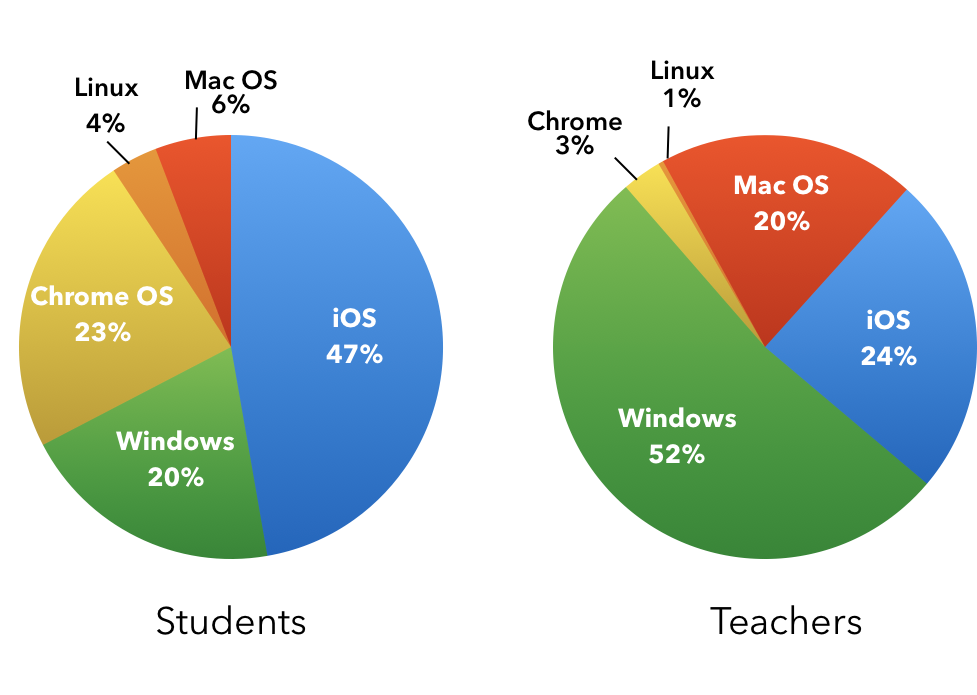
by Guido Kovalskys
Dear Guido,
My co-founder and I just launched our edtech product and it’s doing pretty well. It was built for iOS, and now we’re debating about what to do next: add features to deepen engagement with the product, or spend time recreating our product for different platforms. What do you think? When should I prioritize being multi-platform?
— Waiting at the Platform
Dear Waiting at the Platform,
If you want to sell your product to schools, you need to think multi-platform from day one. When we started Nearpod in 2012, our focus was purely on iPads. We were certain that Apple was going to own the K-12 space.
Fast forward to today: Google Chromebooks, Amazon Kindle Fire, Windows, Linux, and various other devices have entered the classroom. While some schools have a 1:1 program with a specific device (e.g. iPads), most schools have diverse hardware ecosystems: a computer lab, bring-your-own-device (“BYOD”) classes, Chromebook carts, etc.
Let’s take a look at how students and teachers are accessing Nearpod today to get a sense of the significance of a multi-platform product.
Usage of Nearpod by OS Platform — 2016
As you can see, K-12 classrooms are platform-diverse, with varying uses between teachers and students. Specifically, we have found that teachers are drawn to Windows desktops and devices for Nearpod lesson creation and user management. On the student side, we have seen Apple and Google send massive shipments of iPads and Chromebooks into classrooms — note that 70% of our student activity happens via iOS or Chrome OS.
Getting to multi-platform, however, wasn’t easy. We expanded our offering to Windows, Android, and a web app in mid 2014, a full two years after we launched the Nearpod iOS app. By then, Nearpod had become a robust product with a wide array of features and use cases. As a result, there were more challenges in making the transition from mono-platform to multi-platform than there would have been if we had made the decision on day one. It’s one of our major regrets from our early days!
If your resources are limited and you can only focus on one platform, then you should identify your primary use case. As shown below, K-12 students are regularly using a combination of laptops, tablets, and smartphones in the classroom, but the most frequently used device varies depending on the grade level. If it’s early elementary (K-5), I would start with iOS for iPads. If it’s middle or high school (6–12), I recommend starting with a web app that includes a Chromebook integration to Google Classroom.
Device Usage in K-12 Classrooms (Pearson Student Mobile Device Survey, 2015)

Starting on one platform to build awareness is better than nothing. However, as soon as you have the resources, you should invest in being multi-platform instead of building more features. Although expanding access to new platforms is certainly not as sexy as adding new features, multi-platform compatibility will encourage adoption in new schools. We lost several contracts early on because we couldn’t support all devices within a school.
Ultimately, without hardware, your software is irrelevant. And given the diversity of devices in the classroom, it’s crucial to be multi-platform as early on in your product as possible.
P.S. For more on the challenges and opportunities presented by our current platform ecosystem, check out these great posts from Benedict Evans at Andreessen Horowitz and Antonio Rodriguez at Matrix Partners.

